MERV Filter Advisor
Select Your Home Conditions
Choose the conditions that apply to your home to get the ideal MERV recommendation
Recommended MERV Rating
If you’ve ever looked up at your HVAC vent and wondered what’s actually keeping your air clean, you’re not alone. The answer is simple: the most commonly used filter in an HVAC system is the furnace filter. It’s not flashy. It doesn’t make noise. You probably never think about it-until you forget to change it and your lungs start complaining.
Every residential HVAC system in North America, Europe, and much of Asia relies on this basic component. It’s usually a rectangular, cardboard-framed panel that slides into a slot near the return air duct. Sometimes it’s behind a grill in the hallway. Other times, it’s tucked inside the blower compartment of your furnace or air handler. But no matter where it is, it’s doing the same job: trapping dust, pollen, pet dander, and other airborne particles before they recirculate through your home.
Why the Furnace Filter Is Everywhere
It’s not just common-it’s essential. Without a filter, your HVAC system would suck in everything from lint to insect wings. That gunk would clog your blower motor, coat your evaporator coil, and eventually force your system to work harder. That means higher energy bills and more breakdowns. In fact, a dirty filter is one of the top three reasons HVAC systems fail prematurely, according to the U.S. Department of Energy.
Most homes use disposable fiberglass or pleated filters. Fiberglass filters are the cheapest and most widely installed, especially in new construction. They’re basic-good at catching large particles like dust and hair, but useless against smaller allergens. Pleated filters, made from folded synthetic material, are the next step up. They have more surface area, so they last longer and catch finer particles. That’s why they’re the go-to choice for families with allergies or pets.
What Does MERV Mean, and Why Should You Care?
The efficiency of air filters is measured by MERV-Minimum Efficiency Reporting Value. It’s a scale from 1 to 20. The higher the number, the better the filter is at trapping tiny particles.
- MERV 1-4: Basic fiberglass filters. Catch large debris. Common in older homes.
- MERV 5-8: Standard pleated filters. Good for most households. Block pollen, mold spores, and dust mites.
- MERV 9-12: Higher efficiency. Recommended for homes with asthma or allergy sufferers.
- MERV 13-16: Hospital-grade. Traps bacteria and smoke. May require system upgrades.
- MERV 17-20: HEPA-level. Rare in homes. Used in labs and clean rooms.
Most homes use MERV 8 or MERV 11 filters. That’s the sweet spot: effective without overloading your system. Going too high-like MERV 13 or above-can restrict airflow. Your furnace might struggle, leading to uneven heating, frozen coils, or even a cracked heat exchanger. That’s expensive to fix.
How Often Should You Change It?
There’s no one-size-fits-all answer, but here’s what most experts recommend:
- Every 30 days: If you have pets, smoke indoors, or live in a dusty area.
- Every 60-90 days: For average homes without pets or allergies.
- Every 6 months: Only if you’re using a high-end filter (MERV 13+) and your system is designed for it.
Check your filter monthly. Hold it up to the light. If you can’t see through it, it’s time to replace it. A clogged filter doesn’t just reduce air quality-it makes your system work like a car with a dirty oil filter. It’s not just inefficient-it’s dangerous.
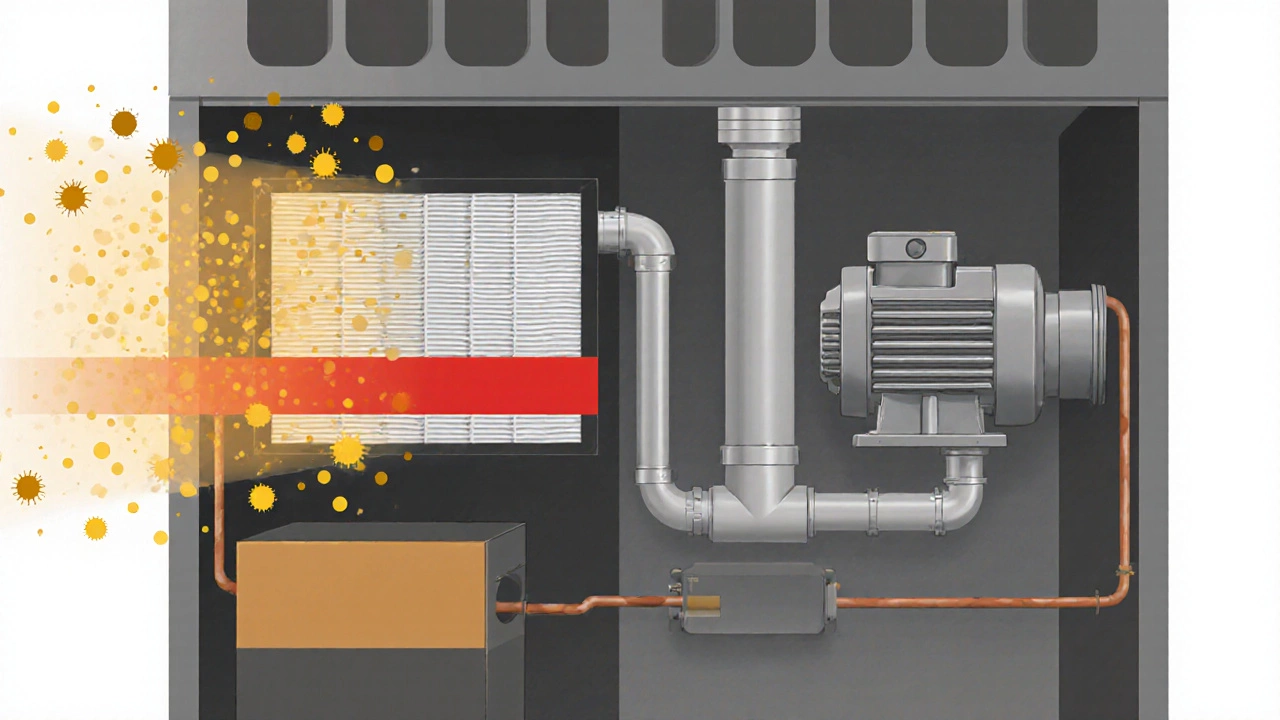
What About Washable or Electrostatic Filters?
You might see ads for reusable filters that claim to save money long-term. They sound great-until you realize how often they need cleaning. Most homeowners don’t clean them properly. They rinse them off quickly, let them air dry, and pop them back in. But if even a little moisture stays inside, mold grows. And mold in your HVAC system? That’s worse than no filter at all.
Electrostatic filters rely on static charge to trap particles. They work well at first, but the charge fades over time. They also don’t perform as well in humid climates like Auckland, where moisture in the air reduces their effectiveness. For most people, disposable pleated filters are cheaper, more reliable, and safer.
What Happens When You Ignore It?
Let’s say you haven’t changed your filter in a year. Here’s what’s likely happening:
- Your indoor air quality is worse than outside air.
- Your heating and cooling bills are 15-20% higher than they should be.
- Your blower motor is overheating from the extra strain.
- Dust is building up on your ductwork, insulation, and even your furniture.
- Your AC coil is coated in grime, reducing efficiency and possibly causing a refrigerant leak.
One homeowner in Wellington replaced their filter after six months of neglect. Their energy bill dropped by $45 a month. Their allergies cleared up in two weeks. That’s not magic-it’s just airflow restored.
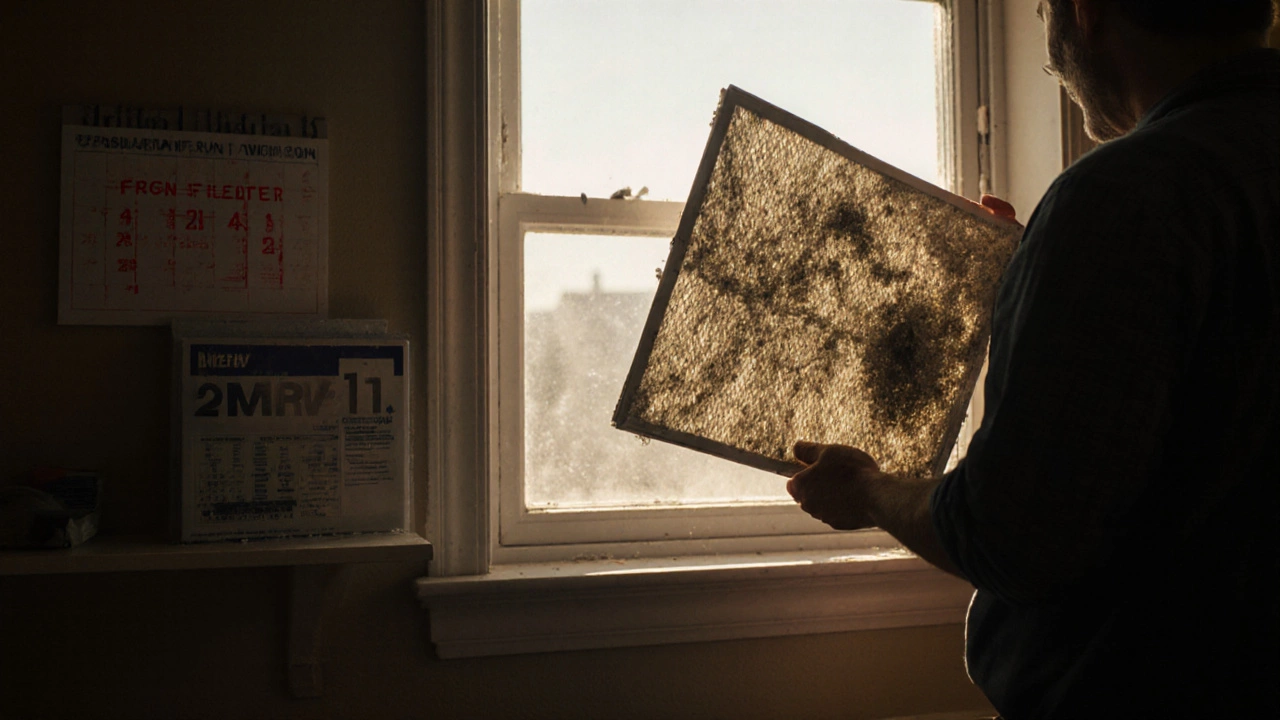
How to Pick the Right One
Not all filters are created equal. Here’s how to choose:
- Check your HVAC manual. It will tell you the correct size and maximum MERV rating your system can handle.
- Measure the old filter. Size is printed on the frame (e.g., 16x20x1). If it’s not there, measure it yourself.
- Go with MERV 8-11 unless you have severe allergies or your system supports higher.
- Avoid the cheapest fiberglass filters unless you’re on a tight budget and don’t mind poor air quality.
- Buy from a reputable brand-Filtrete, Honeywell, or 3M. Avoid unknown brands with no MERV rating.
Pro tip: Buy filters in bulk. A 6-pack of MERV 11 filters often costs less per unit than buying one at a time. Set a reminder on your phone every 60 days. Your lungs-and your wallet-will thank you.
Other Filters in HVAC Systems
Some systems have additional filters. UV lights kill mold and bacteria. Carbon filters absorb odors. But these are add-ons. They don’t replace the primary air filter. Think of them like air fresheners and seat covers-they improve comfort, but they don’t keep the engine running.
There’s also the duct filter, which some homes install in the return duct. But these are rare. The furnace filter is still the main line of defense.
Final Takeaway
The furnace filter is the unsung hero of your home comfort system. It’s cheap, easy to replace, and makes a huge difference. You don’t need fancy tech or smart sensors. Just change it regularly. That’s it.
Forget the hype. Forget the gadgets. The most common filter in an HVAC system is the one you can buy at any hardware store for under $10. And if you’re not changing it every couple of months, you’re not just ignoring maintenance-you’re breathing in your own home’s dirt.
What is the most common HVAC air filter size?
The most common size is 16x20x1 inches, followed closely by 20x25x1 and 14x20x1. But sizes vary by system. Always check the old filter or your HVAC manual for the exact dimensions. Using the wrong size creates gaps that let dust bypass the filter entirely.
Can I use a HEPA filter in my home HVAC system?
Most standard home HVAC systems can’t handle true HEPA filters (MERV 17+). They’re too dense and restrict airflow, which can cause your blower motor to overheat or your furnace to shut down. If you want HEPA-level filtration, consider a standalone air purifier in your bedroom or living room instead.
Do I need a filter if I have a ductless mini-split?
Yes. Even ductless systems have a washable or replaceable filter inside the indoor unit. These filters are usually smaller and easier to access, but they need cleaning every 2-4 weeks if you have pets or live in a dusty area. Skipping this step reduces efficiency and can cause the unit to freeze up.
Is a more expensive filter always better?
Not necessarily. A MERV 13 filter might seem superior, but if your system isn’t designed for it, you’ll get more problems than benefits. Stick to the MERV rating your system can handle. A $15 MERV 11 filter that fits properly is better than a $30 MERV 16 that doesn’t fit or strains your blower.
Can I run my HVAC without a filter?
Technically, yes-but you shouldn’t. Running without a filter for even a few days lets dust and debris enter your ductwork and coil. That leads to costly repairs, reduced efficiency, and poor indoor air quality. Even a dirty filter is better than no filter at all.
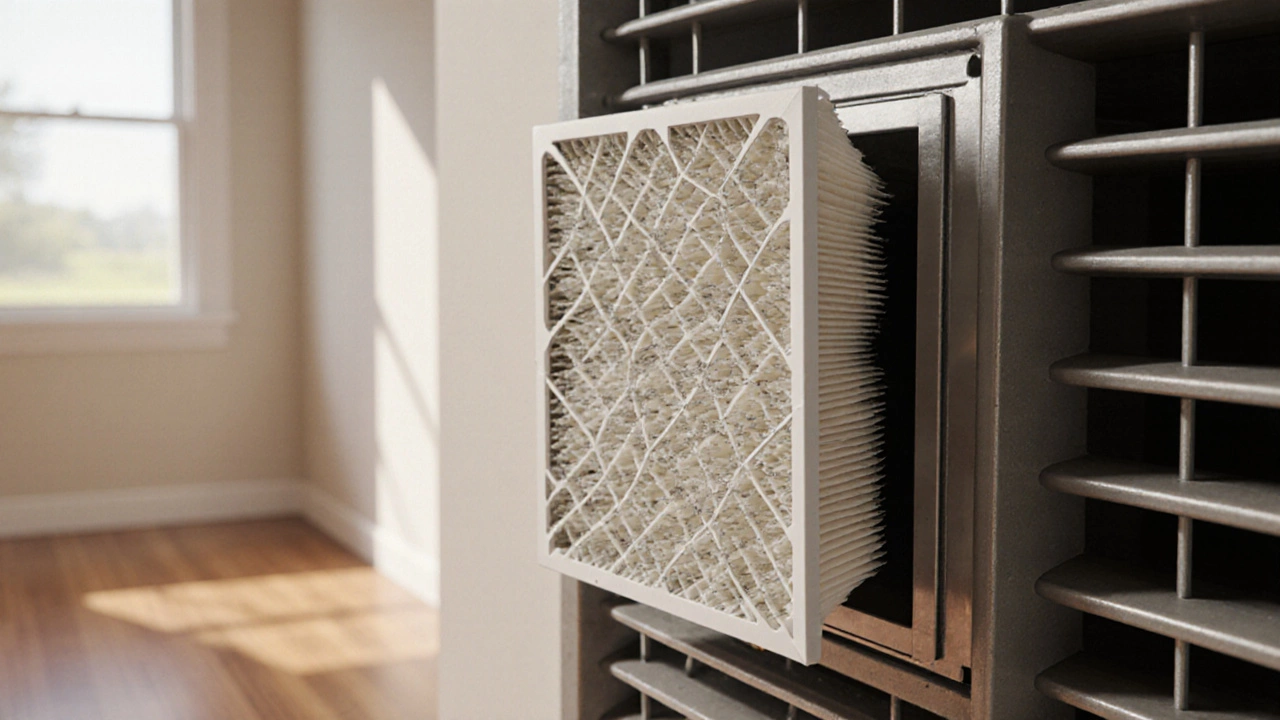

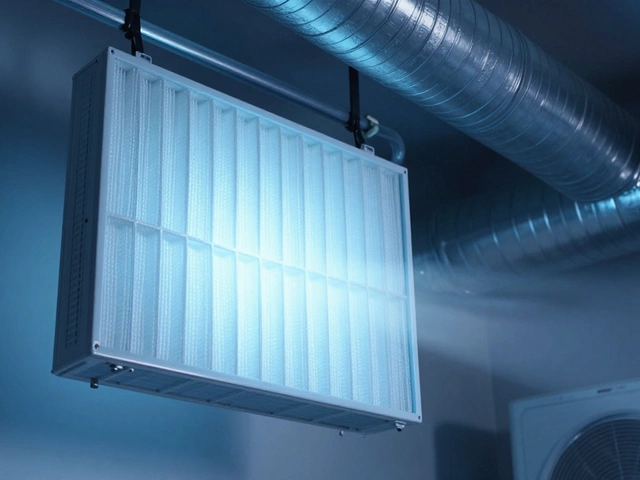
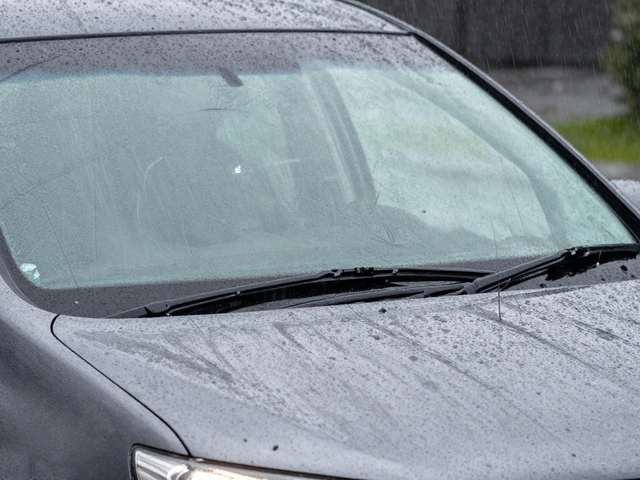
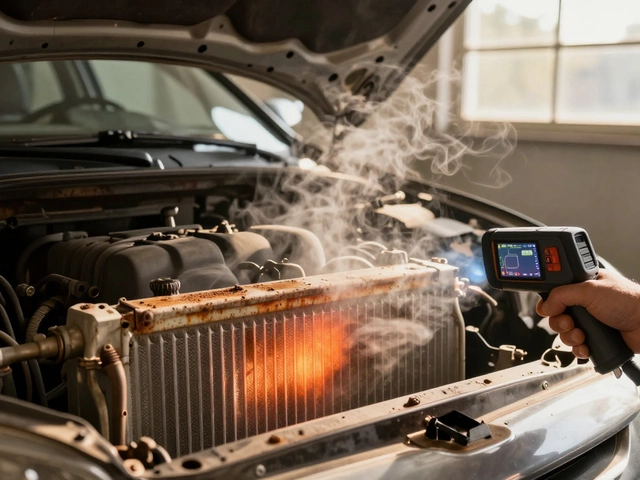
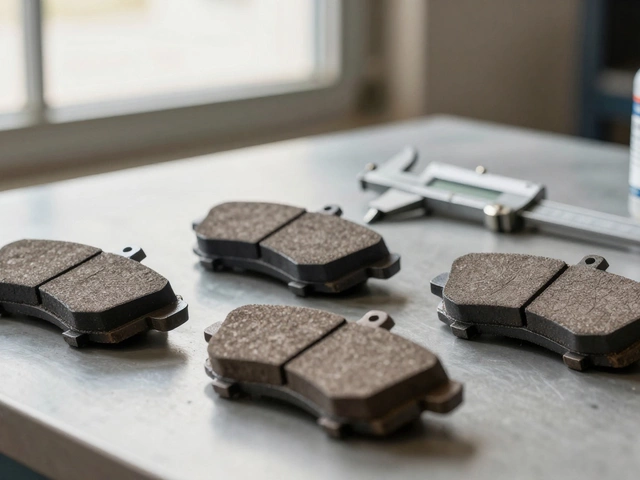



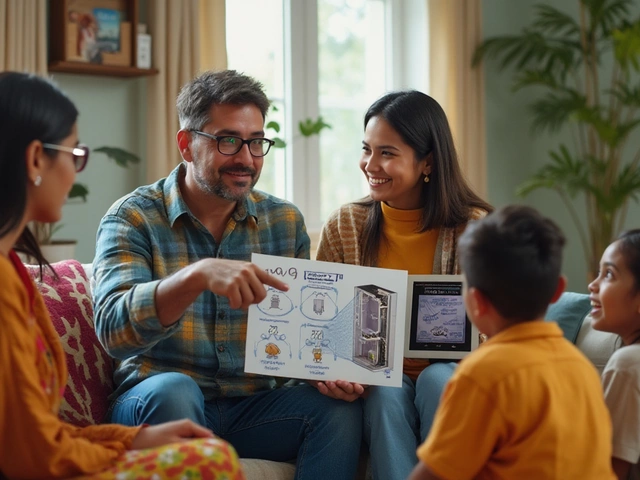

Write a comment